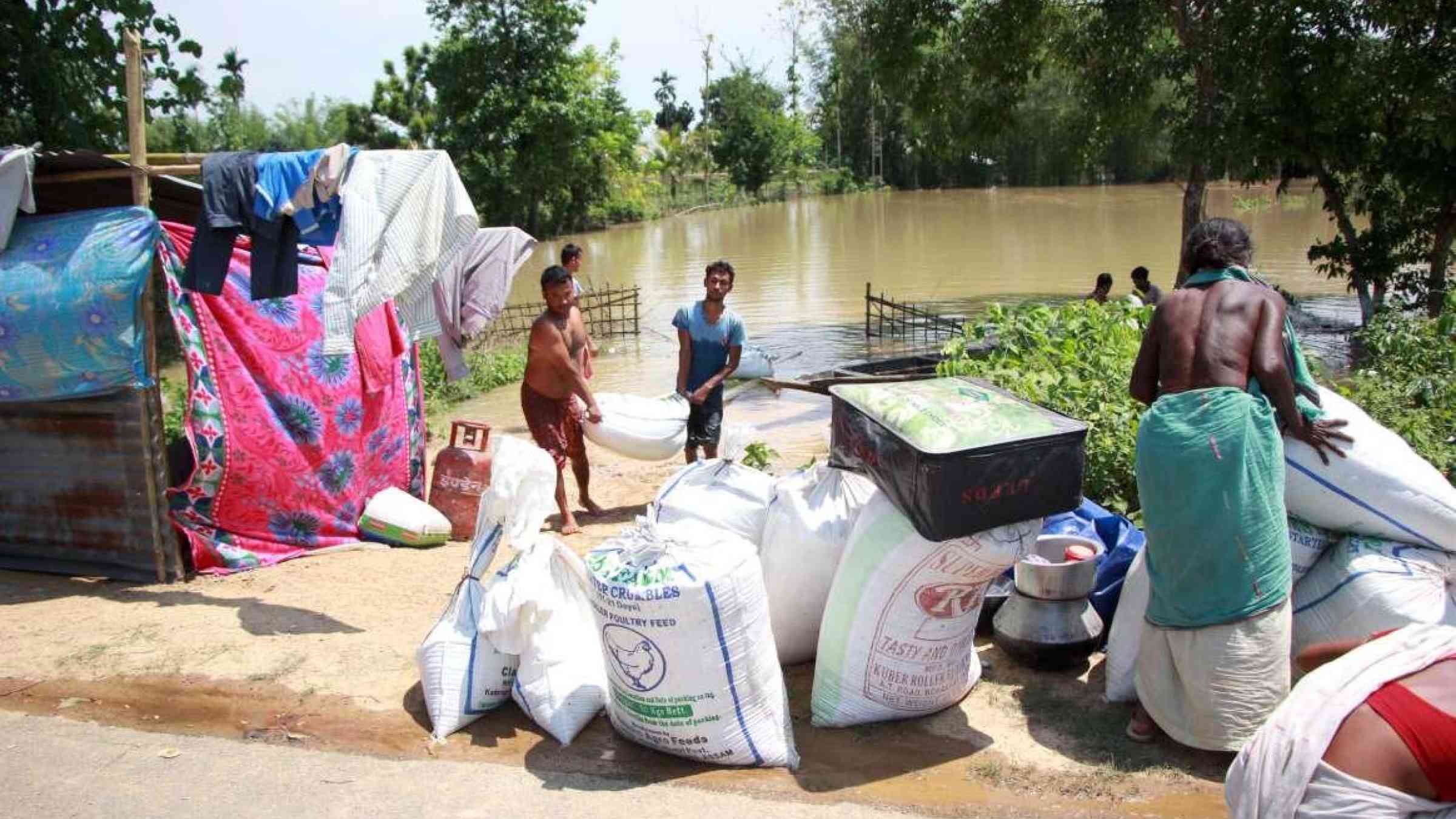Please help us improve PreventionWeb by taking this brief survey. Your input will allow us to better serve the needs of the DRR community.
Digital defenses: Can high-tech insurance flood-proof vulnerable farmers?

Villagers shifting their food grains to the high land as their houses are under water in the flood affected Tetelisara village near Kampur town in Assam, India. Simanta Talukdar / Shutterstock.com
When climate disasters strike, farmers are among the first to feel the consequences. This was true before the novel coronavirus and it's certainly true now. The climate crisis compounded by the global health crisis leaves the most vulnerable even more at risk.
Around 74% of natural disasters between 2001 and 2018 were water related. During the past 20 years, the total number of deaths caused by floods and drought exceeded 166,000, while floods and drought affected over three billion people and cost economies almost US$700 billion, as reported by the UN World Water Development Report in 2020.
Until recently, flood-risk management offered mostly low-tech, crisis response solutions. These included infrastructures like dams and flood walls, often created to rebuild destroyed landscapes in agricultural areas.
But these methods weren't enough to help the most vulnerable farmers defend and recover.
International Water Management Institute (IWMI) researchers began developing systems to better warn and prepare flood-prone communities. One of these solutions is index-based flood insurance (IBFI), a system that uses satellite data to calculate faster compensation for farmers experiencing flood-induced loses.
IBFI eases the sometimes-staggering economic burden they would normally be left to carry alone. The IBFI product can improve on similar schemes that already exist including India's Pradhan Mantri Fasal Bima Yojana (PMFBY) crop insurance scheme launched in early 2016.
In India, Anju Devi Bhagat is the primary farmer of her household in Ajitpur Bakuchi, Bihar. She was one of several recipients of the index-flood insurance initiative launched by IWMI in collaboration with CGIAR Research Programs Water, Land and Ecosystems (WLE) and Climate Change, Agriculture and Food Security (CCAFS). The 3,500 rupees she received went directly towards purchasing fertilizers, medicine and labor.
"I do not have an earning partner, so the money was invaluable," she says.
Her situation is not unusual. About 14% of farmers insured through this pilot phase in Muzaffarpur were women and heads of their households. As men migrate out of the state, agricultural labor often becomes the responsibility of female farmers. This trend -- termed the feminization of agriculture -- is now studied more widely by researchers and gender specialists.
The payouts can better reach women and other marginalized farmers. Recent research in Bangladesh and India recommends that implementers partner with organizations that understand rural social structures and have trust at village level, using local institutions to ensure that farmers fully understand the benefits it can deliver.
IWMI has also launched a project combining bundle stress-resistant seeds with index insurance and weather advisory services, a scheme that can increase farmers' wages and improve climate resilience.
In 2018, 63 farmers in flood-prone areas received seeds of 11 crops including vegetables and winter maize. Future efforts also include an advisory service accessible to farmers via smartphone, which will update them on new innovations in neighboring communities.
Researchers estimate that one million farmers will have agricultural flood insurance by 2025.
Explore further
Please note: Content is displayed as last posted by a PreventionWeb community member or editor. The views expressed therein are not necessarily those of UNDRR, PreventionWeb, or its sponsors. See our terms of use
Is this page useful?
Yes No Report an issue on this pageThank you. If you have 2 minutes, we would benefit from additional feedback (link opens in a new window).